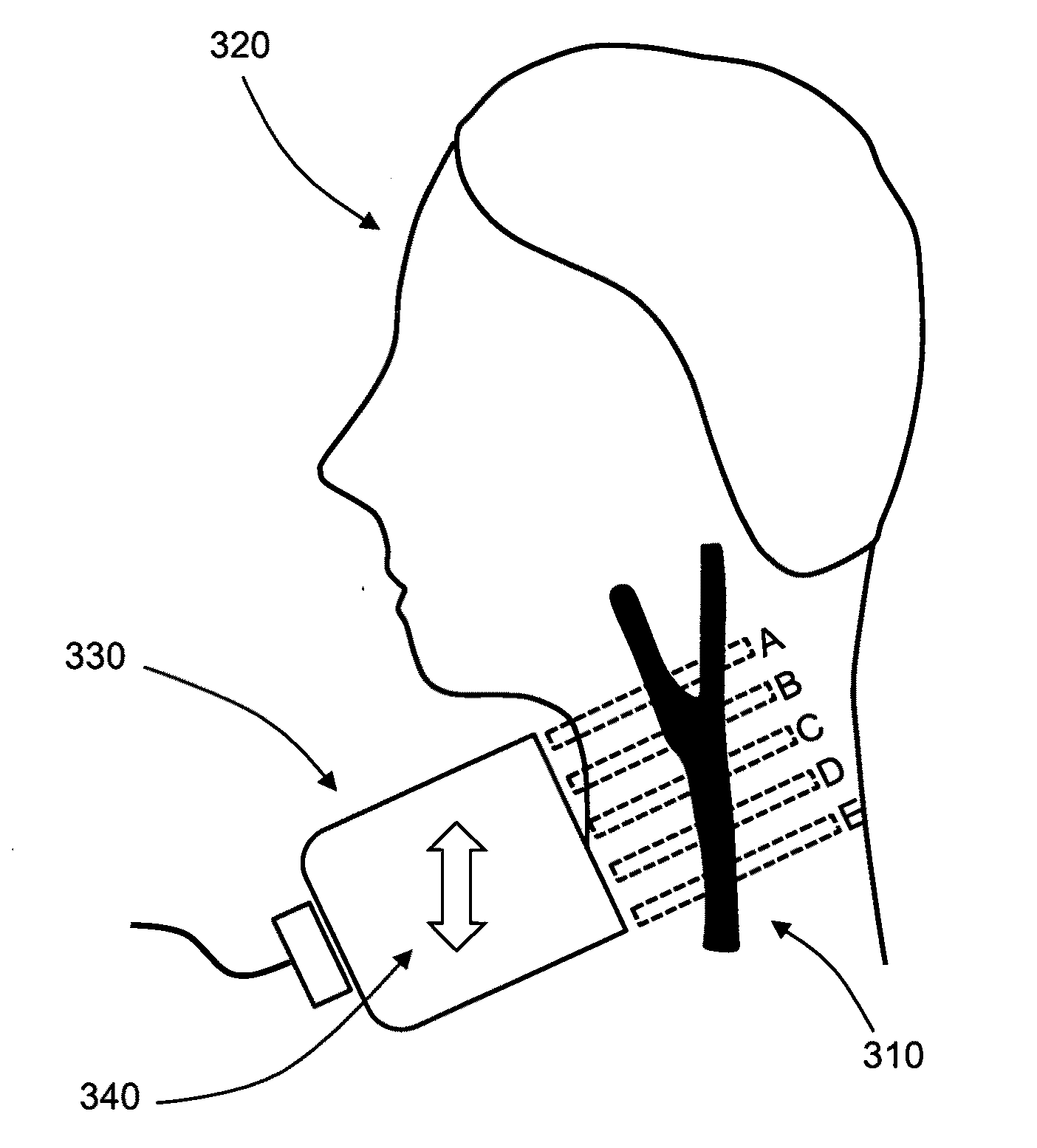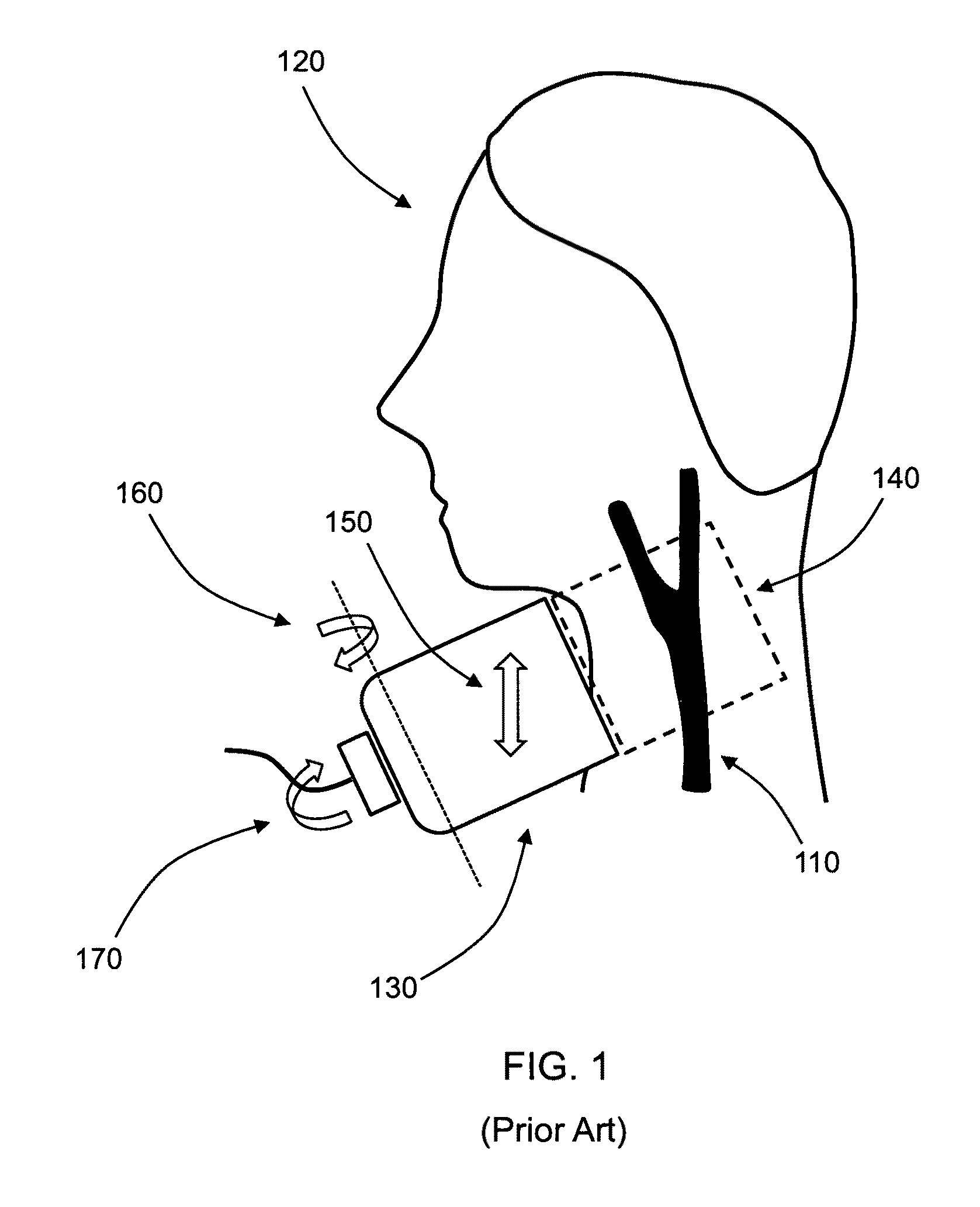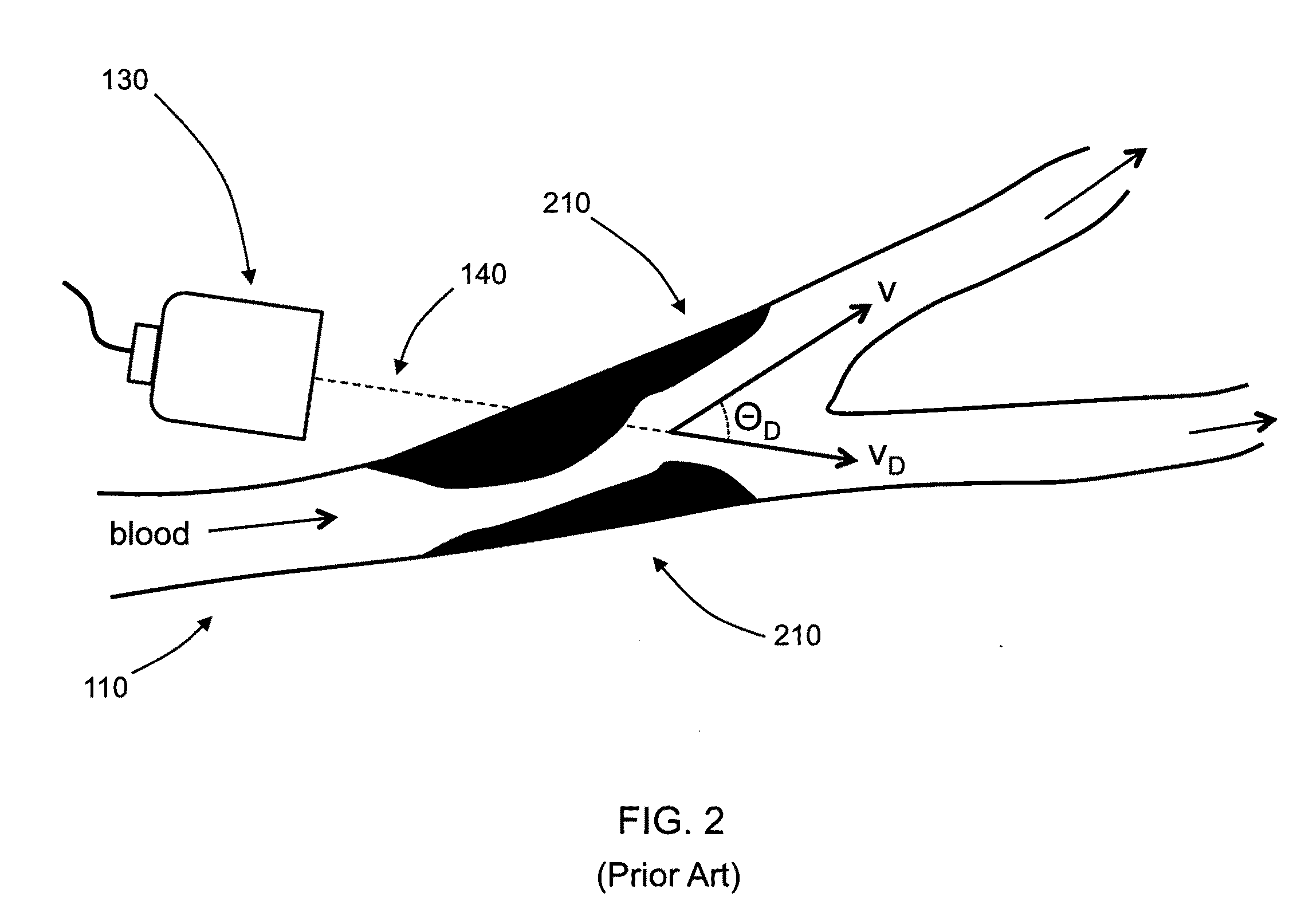Automated detection of asymptomatic carotid stenosis
- Summary
- Abstract
- Description
- Claims
- Application Information
AI Technical Summary
Benefits of technology
Problems solved by technology
Method used
Image
Examples
Embodiment Construction
[0023]The common occurrence of stroke, particularly due to asymptomatic carotid stenosis, indicates that detection of stenosis is an important and vital medical procedure. Unfortunately, accurate stenosis detection can be a daunting task. Though affordable ultrasound techniques have been developed, existing devices can only measure velocity longitudinal to the axis of the device, thereby causing ambiguous measurements of the peak blood velocity (PBV). Often, a skilled expert is required to accurately operate the device for true PBV measurement and determination of patients at risk for stroke.
[0024]The present invention is directed to the measurement of peak blood velocities in a blood vessel and using a calculation of the Doppler angle to correct the measured PBVs. Preferred embodiments of the present invention utilize planar cross-sectional images of the blood vessel to determine the Doppler angle and PBVs. The present invention does not require three-dimensional or four-dimensiona...
PUM
 Login to View More
Login to View More Abstract
Description
Claims
Application Information
 Login to View More
Login to View More - R&D
- Intellectual Property
- Life Sciences
- Materials
- Tech Scout
- Unparalleled Data Quality
- Higher Quality Content
- 60% Fewer Hallucinations
Browse by: Latest US Patents, China's latest patents, Technical Efficacy Thesaurus, Application Domain, Technology Topic, Popular Technical Reports.
© 2025 PatSnap. All rights reserved.Legal|Privacy policy|Modern Slavery Act Transparency Statement|Sitemap|About US| Contact US: help@patsnap.com



